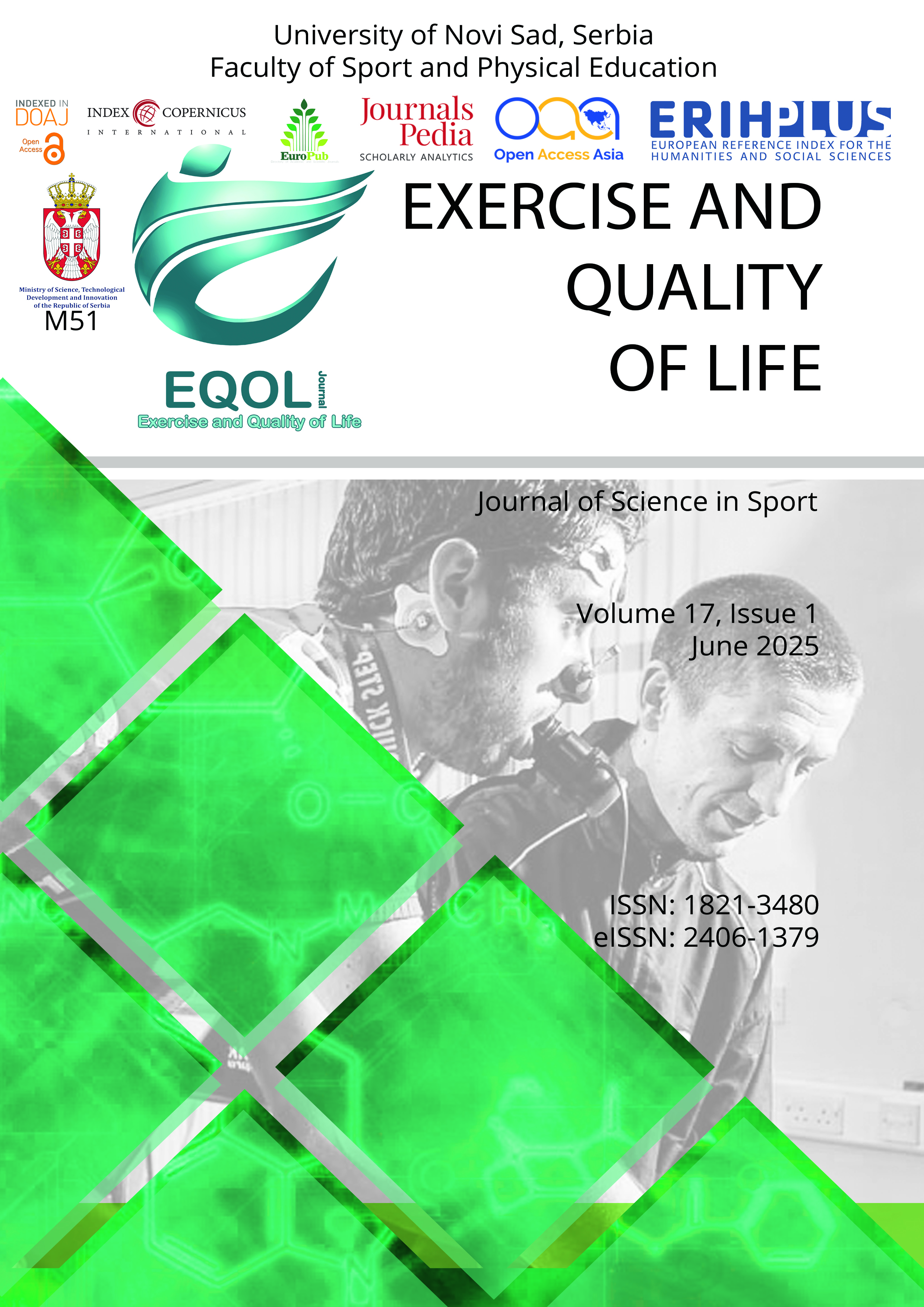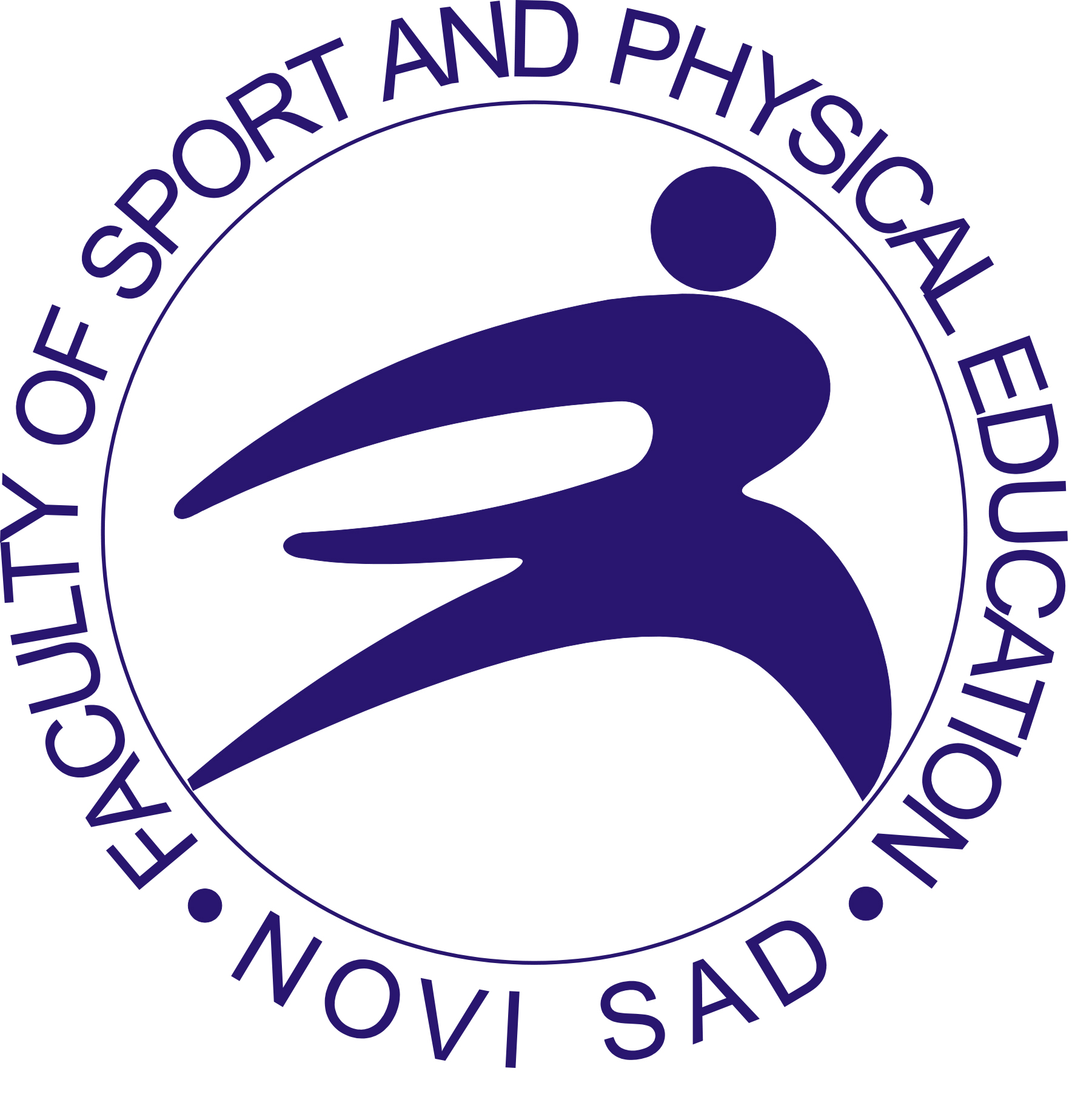Current issue

Volume 17, Issue 1, 2025
Online ISSN: 2406-1379
ISSN: 1821-3480
Volume 17 , Issue 1, (2025)
Published: 15.06.2025.
Open Access
All issues
Contents
15.06.2024.
Original scientific paper
Correlation between acute muscle damage and oxidative protection enzymes during different aerobic exercises
Different types of aerobic exercise can cause different disorders of homeostasis. This cross-over experiment aimed to determine the muscle fatigue and the antioxidative protection of female basketball players following a load caused by three different aerobic-type exercises (low-intensity continuous, high-intensity continuous, and high-intensity interval training). Twelve female basketball players (age 17.7±4.3 years; weight 67.3±9.8 kg; height 178.0±7.4 cm) voluntarily participated in the study. A wash-out period of 7 days between single sessions of different training was provided. Venous blood was drawn right before and immediately after each exercise session. The parameters that were analyzed are markers of muscle damage and enzymes of antioxidant protection. As a marker of muscle damage, myoglobin (F=2.884; p=0.065) and lactates (F=5.254; p=0.008) have higher values and statistically significant differences between training types. Creatinine shows higher values after each training session (F=4.053; p=0.022). Results of enzyme activity for oxidative protection show statistically significant differences between groups for catalase (F=5.811; p=0.005) with different types of training intervention. At the beginning of the preparatory period, parameters of acute muscle damage values are high. During the season, in response to different types of training, those parameters decrease in response to the body's adaptation to exercise-induced stress. Training leads to maintenance of physiological balance in the body and oxidative stress is not a necessary phenomenon of high aerobic training load. The inclusion of antioxidant protection enzymes decreases as the body adapts to a certain type of exercise.
Bojana Marić, Sandra Vujkov
15.12.2018.
Original scientific paper
Inclusion of preschool children into organized activity in leisure time
All physical activity of preschool children during the day occurs while they are in kindergarten or during their leisure time. The aim of the study was to present the results related to the participation of children in organized activities during leisure time and what is the perception of parents about the scope of their children's physical activity and the time spent on watching TV, using computers and playing video games (as a part of wider study). The research was conducted in 2017 in the Preschool institution “Naša Radost” in Subotica. The survey questionnaire was filled in by 135 parents for children of the average age of 5.14 years (±0.91). The survey questionnaire contained questions about children's nutrition (NutriStep survey) and their involvement in organized activities with educational and sports-recreational content during leisure time, as well as parent’s opinion on quantity in child’s sedentary activities. 65.9% of children aged 5 to 7 was found to attend some kind of organized activity, most often within programs of foreign language schools, sports schools and programs with aesthetic presentation of skills is important (ballet, dance and folklore). The largest number of parents reported that their child spent one hour watching TV, using a computer or playing games. About 71% of parents reported that their child was physically active enough. In both cases, a statistically significant difference was found between boys and girls. Within the family circle and within the educational institution, where children spend most of the time, it is necessary to provide conditions for undisturbed growth and development. One of the best ways is through exercising physical activity.
Milenko Janković, Karolina Berenji, Zoran Milić, Sandra Vujkov























